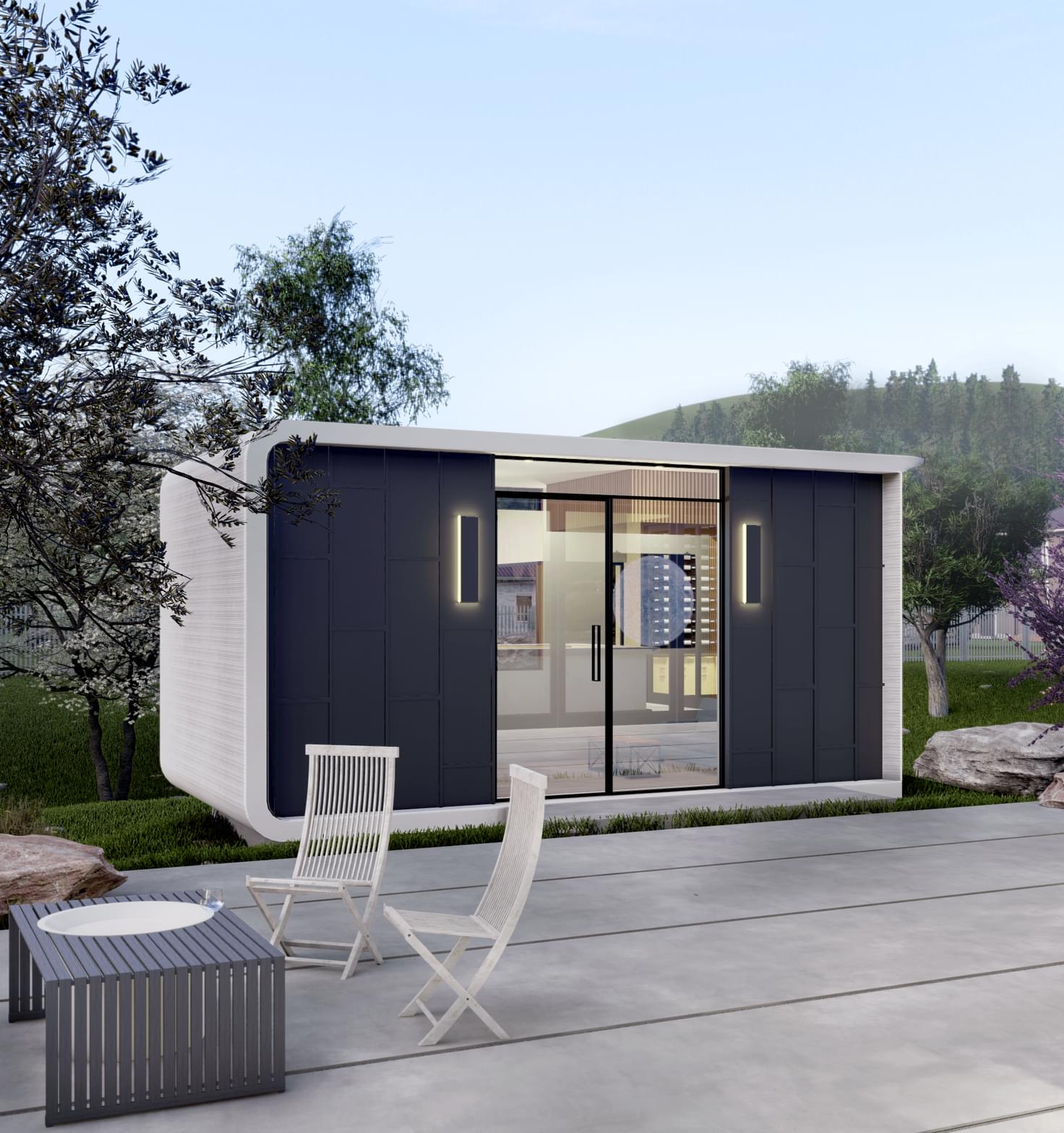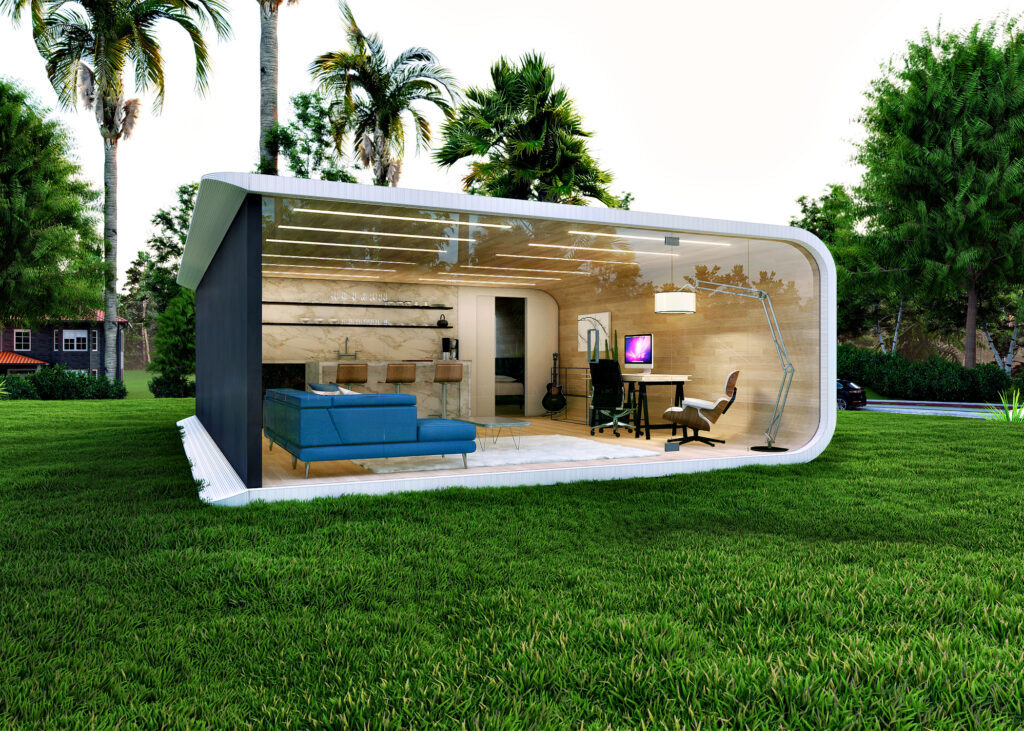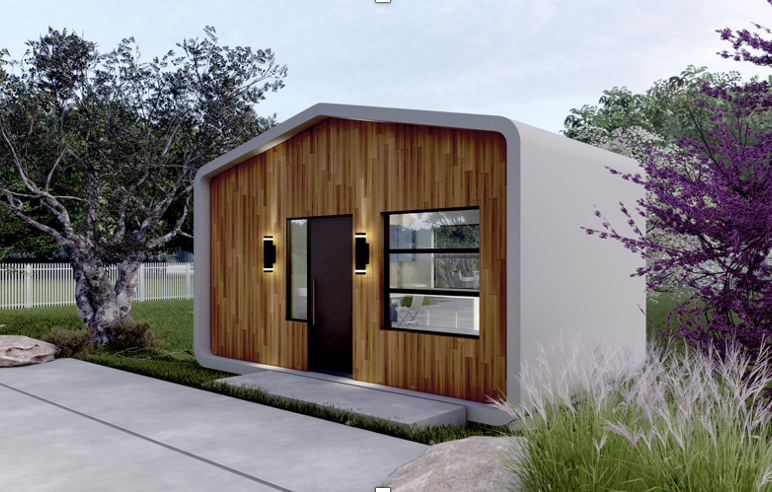
Words by Tess Becker
As we face the climate crisis, many are looking for innovations to lower their footprint. Energy companies are looking for renewable sources, grocery stores are banning single-use plastics, and governments are funding environmental commitments and programs.
One potential source of environmental innovation comes in the form of housing, something that Azure is trying to make a name in.
The Los Angeles startup uses 3D printing technology and applies it to the housing process, while also creating a sustainable model, using recycled materials as a resource for building.
“We’re trying to take a waste product and repurpose it,” Azure co-founder Ross Maguire tells Smiley News. “We ended up leading ourselves to plastic and found that it was good in a number of ways. There are abundant numbers of plastic buildings across the planet and it actually provides us with a number of purposes for construction.”

The plastic material they’re working with is a waterproof polymer similar to the plastic found in water bottles and food packaging. They add a few components to it, including a UV stabilizer, and fiberglass among other things to supplement its strength.
Like many things, the idea of Azure came across during the height of the pandemic. Ross and other co-founder Gene Eidelman found that people didn’t like them working for long periods in their backyard because of a mix of social distancing and annoyance at having housing work done, taking up space, and making a lot of noise. So they turned their sights toward pre-fabrication.
“It was like ‘well if we're going to do it, then how do we do what off-site construction better than what is currently out there?’” Ross says. “At the time, there were a few 3D printing construction companies that were starting to evolve and so that was an interest and a thought process.”
After thinking it over, they decided to pursue 3D printing.
“We wanted to find something that was a recycled-based product,” Ross says. “It took a lot of zoom calls and a lot of conversations with people all over the world to kind of narrow down what has the suitable kind of mechanical properties to serve as a printing material for us.”
According to Azure, they build homes 70% faster and 30% cheaper than “traditional home construction methods.”
Something that came as a result of their initial design, Azure’s structures will be affordable, and modular, meaning that you can add on to existing structures without much fanfare.

The first project they’re rolling out is backyard studios that serve as supplements to existing homes, for which they already have $16 million worth of pre-orders lined up, something that they’re already working on expanding to meet.
And while it's not a focus for them, they like the idea that their homes might also help address the housing crisis in the United States.
“When compared with conventional construction, we produce the entire structural skeleton, the exterior sheathing, the water control barrier, the exterior finish, the passageways for utilities, and the grounding for interior finishes, in a fraction of the time and cost.
"By revolutionizing a new age of the home building with our sustainable, automated, and exact production processes, we see a very, very exciting future ahead.”